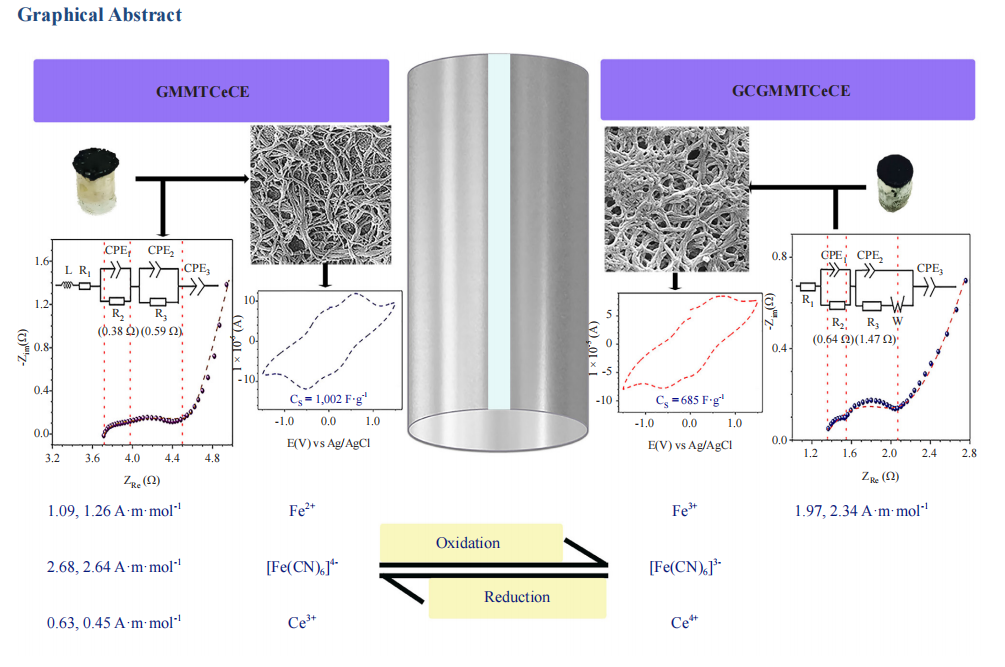Advancement of Graphite-Clay Composite Electrodes via Different Compositions to Improve the Synergetic Matrix Effect Towards General Electroanalytical and Energy Storage Applications
DOI:
https://doi.org/10.37256/aecm.5220245507Keywords:
ternary composite electrode, quaternary composite electrode, analyte detection, electropolymerization, supercapacitorAbstract
Modern electrode technology trends for enhancing multifunctional electrodes, prioritizing energy storage and electroanalytical prospects. This study anticipates fabricating electrodes by incorporating cement and colloidal graphite, to improve the performance via synergetic interactions of the composite matrix. Graphite-montmorillonite-cement ternary composite electrode (GMMTCeCE) and graphite-colloidal graphite-montmorillonite-cement quaternary composite electrode (GCGMMTCeCE) are fabricated, as two types of electrodes. GMMTCeCE reflects the lowest peak-to-peak separation in Ce3+/Ce4+ (0.098 V), greater sensitivity towards [Fe(CN)6]4- (2.68 A·m·mol-1) and [Fe(CN)6]3- (2.64 A·m·mol-1), showing comparatively better performance in analyte detection than GCGMMTCeCE. Multilayered polyaniline (PANI) nanofibers network, which is unique in GMMTCeCE electropolymerization, accounts for very low serial (0.38 Ω) and charge transfer (0.59 Ω) resistances, while densely packed nanofibers of PANI in GCGMMTCeCE is responsible for the lowest ohmic resistance (1.31 Ω). Supercapacitor device fabricated by PANI-GMMTCeCE, achieved higher capacitance (1,002 F·g-1 at 5 mV·s-1) and showed greater cyclic stability, in contrast to relatively lower specific capacitance (685 F·g-1 at 5 mV·s-1) attained by PANI-GCGMMTCeCE, demonstrates the superiority of the supercapacitor of GMMTCeCE over GCGMMTCeCE for energy-storage purposes. Therefore, GMMTCeCE outperformed GCGMMTCeCE in electroanalysis and energy storage, confirming better synergetic interactions of the ternary composite matrix over the quaternary one. Besides, further improvements in graphite-clay composite matrix properties facilitate the advancement of electrochemical sensors and supercapacitor devices.

Downloads
Published
How to Cite
Issue
Section
License
Copyright (c) 2024 Pannilage M. H. Madhushanka, Kohobhange S. P. Karunadasa, D. J. D. S. Gamage

This work is licensed under a Creative Commons Attribution 4.0 International License.

